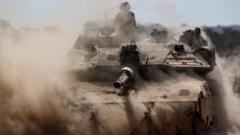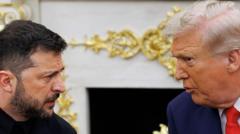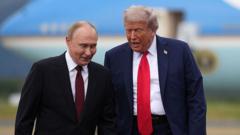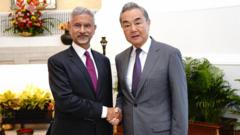As Russia aims to solidify control over Donetsk, Ukraine's continued resistance is pivotal for its defensive posture and regional stability.
**Strategic Importance of Donetsk for Ukraine's Defence Efforts**
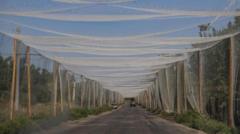
**Strategic Importance of Donetsk for Ukraine's Defence Efforts**
An analysis of the critical role Donetsk plays in Ukraine's military strategy and territorial integrity.
The ongoing conflict in Ukraine has brought the region of Donetsk into sharp focus, underscoring its strategic importance in the face of continuous Russian aggression. Following the recent summit in Alaska, reports indicate that Russian President Vladimir Putin seeks to solidify control over Donetsk by proposing a ceasefire that preserves the current front lines while demanding Ukrainian withdrawal from the remaining parts of the region. This move is seen as an attempt to legitimize Russia's claims while minimizing further military losses.
Currently, Russian forces control approximately 70% of Donetsk, including its capital, making it a crucial focal point in the ongoing conflict. The implications of a Ukrainian withdrawal from western Donetsk could be severe; it would not only result in significant territorial loss but also potentially trigger a new wave of refugees, further exacerbating the humanitarian crisis.
Reports indicate that Ukraine still retains control over around 6,600 square kilometers of territory within Donetsk, where approximately 250,000 residents remain amid the ravaged landscape of war-torn cities. Major urban centers such as Kramatorsk and Slovyansk stand as crucial bastions against further encroachment, situated in a region historically recognized for its industrial capacity.
The military significance of this territory cannot be overstated. A report from the Institute for the Study of War highlights a fortified "belt" through western Donetsk, meticulously constructed by Ukrainian forces over the past decade. Trenches, bunkers, and extensive minefields contribute to the area’s defensive infrastructure, which is currently under siege from Russian forces seeking to capture strategic locations like Pokrovsk.
However, while fortifications play a vital role, the geographical layout of Donetsk presents challenges for Ukraine. The high ground advantage observed around the city of Donetsk prevails in the battle for observation and coordination, critical for sustaining effective defense strategies. The loss of high ground in locations such as Chasiv Yar would significantly hinder Ukraine's operational capabilities in the region.
Despite the substantial front line that extends beyond Donetsk, Russian forces face immense difficulties in advancing through already fortified Ukrainian positions. Military experts speculate that any redirection of Russian troops may not yield better advancements elsewhere along this extensive line of engagement.
There is hope, however, for Ukraine to consolidate its defensive capabilities should a peace agreement be reached. The transition to a more favorable defensive line would require a considerable amount of time and resources, amidst ongoing precarious conditions due to Russian pressures.
Ukrainian President Volodymyr Zelensky has firmly stated that surrendering any portion of the Donbas region is not an option. He perceives maintaining control over Donetsk as vital to preventing future aggression from Russia, reinforcing the notion that the region is a critical line of defense for Ukraine’s sovereignty and territorial integrity as the war continues to unfold.
Currently, Russian forces control approximately 70% of Donetsk, including its capital, making it a crucial focal point in the ongoing conflict. The implications of a Ukrainian withdrawal from western Donetsk could be severe; it would not only result in significant territorial loss but also potentially trigger a new wave of refugees, further exacerbating the humanitarian crisis.
Reports indicate that Ukraine still retains control over around 6,600 square kilometers of territory within Donetsk, where approximately 250,000 residents remain amid the ravaged landscape of war-torn cities. Major urban centers such as Kramatorsk and Slovyansk stand as crucial bastions against further encroachment, situated in a region historically recognized for its industrial capacity.
The military significance of this territory cannot be overstated. A report from the Institute for the Study of War highlights a fortified "belt" through western Donetsk, meticulously constructed by Ukrainian forces over the past decade. Trenches, bunkers, and extensive minefields contribute to the area’s defensive infrastructure, which is currently under siege from Russian forces seeking to capture strategic locations like Pokrovsk.
However, while fortifications play a vital role, the geographical layout of Donetsk presents challenges for Ukraine. The high ground advantage observed around the city of Donetsk prevails in the battle for observation and coordination, critical for sustaining effective defense strategies. The loss of high ground in locations such as Chasiv Yar would significantly hinder Ukraine's operational capabilities in the region.
Despite the substantial front line that extends beyond Donetsk, Russian forces face immense difficulties in advancing through already fortified Ukrainian positions. Military experts speculate that any redirection of Russian troops may not yield better advancements elsewhere along this extensive line of engagement.
There is hope, however, for Ukraine to consolidate its defensive capabilities should a peace agreement be reached. The transition to a more favorable defensive line would require a considerable amount of time and resources, amidst ongoing precarious conditions due to Russian pressures.
Ukrainian President Volodymyr Zelensky has firmly stated that surrendering any portion of the Donbas region is not an option. He perceives maintaining control over Donetsk as vital to preventing future aggression from Russia, reinforcing the notion that the region is a critical line of defense for Ukraine’s sovereignty and territorial integrity as the war continues to unfold.


